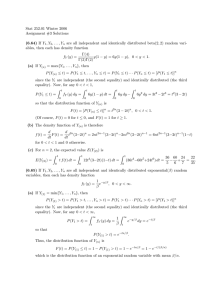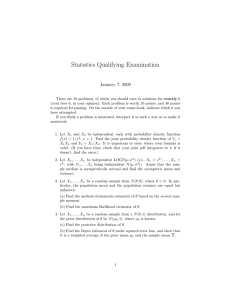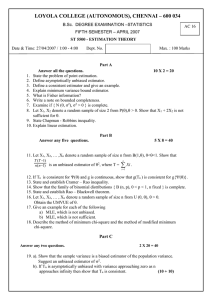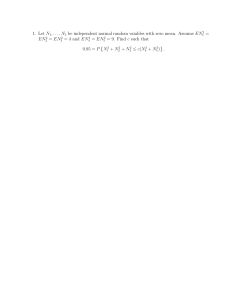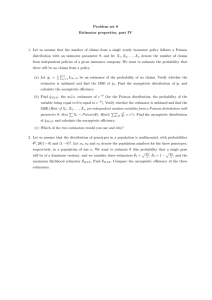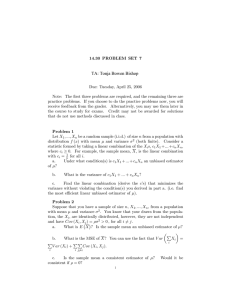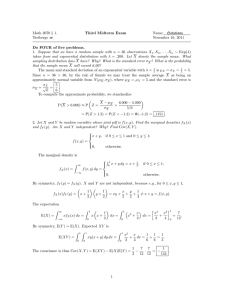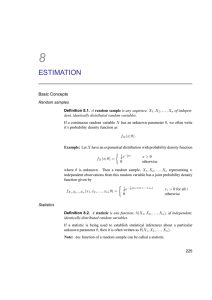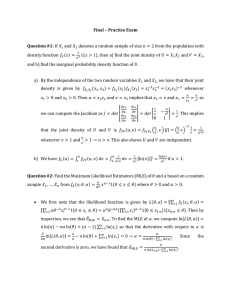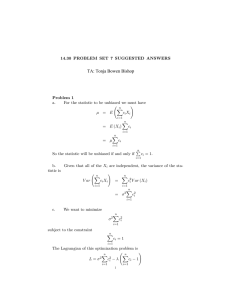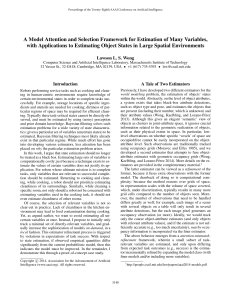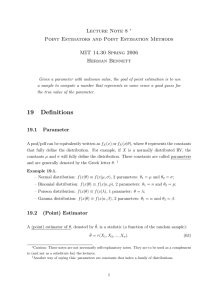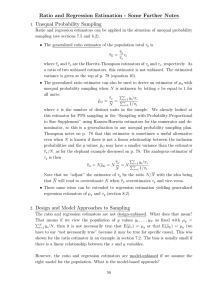Statistics Qualifying Exam January, 2010
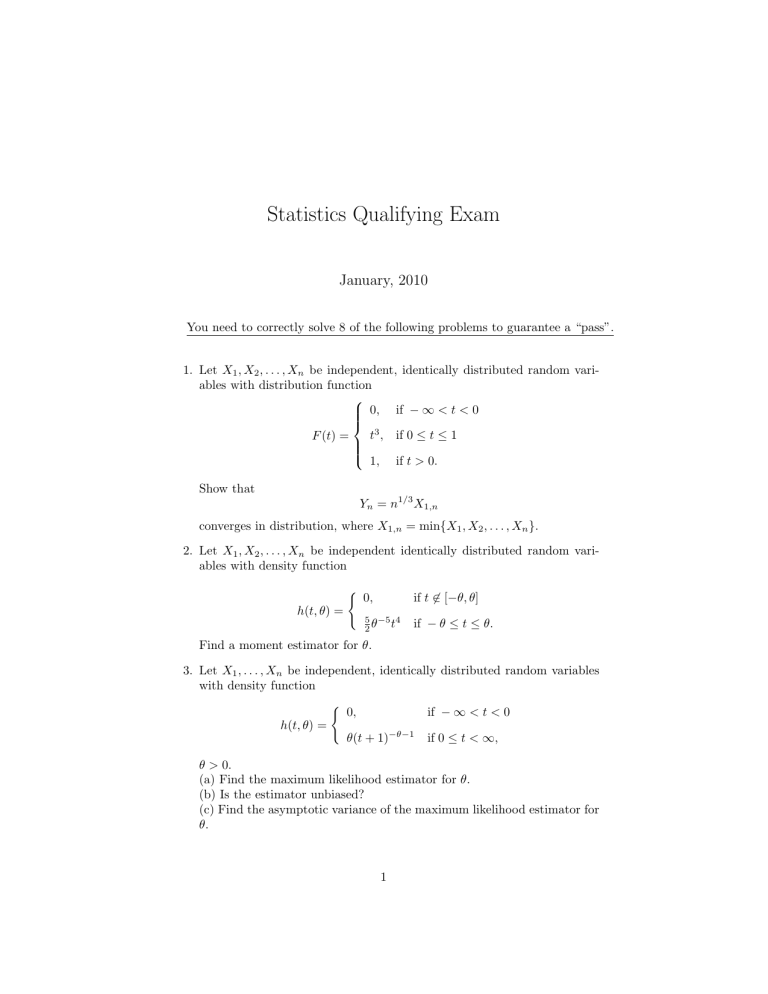
Statistics Qualifying Exam
January, 2010
You need to correctly solve 8 of the following problems to guarantee a “pass”.
1. Let X
1
, X
2
, . . . , X n be independent, identically distributed random variables with distribution function
0
, if − ∞ < t <
0
F ( t ) =
t 3 , if 0 ≤ t
1 , if t > 0 .
≤ 1
Show that
Y n
= n
1 / 3
X
1 ,n converges in distribution, where
X
1 ,n
= min { X
1
, X
2
, . . . , X n
} .
2. Let
X
1
, X
2
, . . . , X n be independent identically distributed random variables with density function
%
0
, h ( t, θ ) =
5
2
θ − 5 t 4
Find a moment estimator for θ .
if if t $∈ [ − θ , θ
]
− θ ≤ t ≤ θ .
3. Let X
1
, . . . , X n be independent, identically distributed random variables with density function h ( t, θ ) =
%
0 ,
θ ( t + 1) − θ − 1 if if 0
− ∞ < t <
≤ t < ∞ ,
0
θ > 0.
(a) Find the maximum likelihood estimator for θ .
(b) Is the estimator unbiased?
(c) Find the asymptotic variance of the maximum likelihood estimator for
θ .
1
4. Let X
1
, X
2
, . . . , X n be independent identically distributed random variables with density function
%
0 , if t $∈ [0 , θ ] h ( t, θ ) =
2
θ
− 2 t if 0 ≤ t ≤ θ .
Find the uniformly minimum variance unbiased estimator for
θ
. Explain your answer. You need to prove directly that the su ffi cient statistic is also complete in this case.
5. Let X and Y be two independent random variables with density functions
%
0 , f ( t ) = if t $∈ [0 , 4]
1 / 4 , if 0 ≤ t ≤ 4 and h ( t ) =
%
0 ,
2 e − 2 t
Compute the density of X − Y .
if if 0
− ∞ < t <
≤ t < ∞ .
0
6. Let X
1 and X
2 function of X
1 is be independent random variables. The density function f ( t ) =
0 , e t e − 1
The distribution of X
2 is if t if 0
$∈ [0 , 1]
≤ t ≤ 1 .
P { X
2
= 1 } = p and P { X
2
= − 1 } = q, p + q = 1 .
Compute the moment generating function of X
1
X
2
.
7. Let X
1
, . . . , X n be an i.i.d. sample from a UNIF(0 , θ ) distribution, where
θ > 0 is unknown. Find a 95% confidence interval for θ .
8. Let X
1
, . . . , X n denote an independent sample from an exponential distribution with [unknown] mean θ > 0. What does the Neyman–Pearson lemma say about
H
0
:
θ
= 1 versus
H identify explicitly the rejection region.
a
:
θ
= 2? Explain carefully, and
9. Let m denote the median distance [in 1000 miles] required for a certain brand of automobile tires to wear out. Test to see whether or not m ≤ 29, based on the following random sample:
23 20 26 25 48 26 25 24 15 20
2
10. Derive, using only first principles, the least-squares estimators of the slope and the intercept of a linear regression problem. What can you say about the optimality properties of those estimators?
11. The following data are times (in hours) between failures of air conditioning equipment in a particular airplane:
74 57 48 29 502 12 70 21 29 386 59 27 153 26 326
.
Assume that the data are observed values of an i.i.d. random sample from an exponential distribution,
H a
X i
∼ EXP( θ ). Test
: θ = 125. (A chi-square table is provided.)
H
0
: θ = 125 versus
12. A sample of 400 people was asked their degree of support of a balanced budget and their degree of support of public education, with the following results:
Education/Budget Strong Undecided Weak
Strong
Undecided
Weak
100
60
20
80
80
50
20
20
5
Test the hypothesis of independence at α = 0 .
05. (A chi-square table is provided.)
3
4

